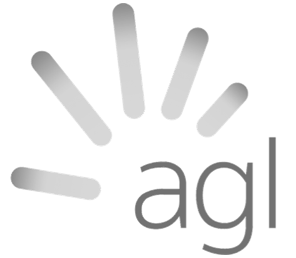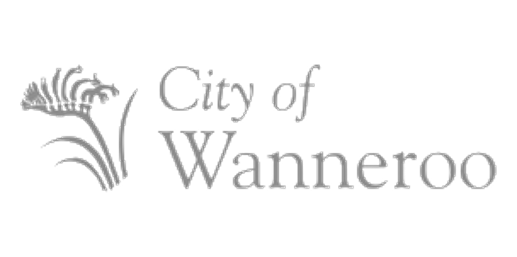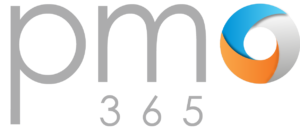PMO (Project Management Office) Software facilitates project and portfolio management and processes across an enterprise. It aims to improve collaboration between all the different departments and users involved in delivering projects. Combined with effective real-time data management, it can also provide faster workflows, instantaneous performance tracking, and insightful, real-time strategic analyses across all portfolios.
PMO365 is a PMO software solution that adapts to every work environment, delivering high-level visibility and control over your entire project portfolio. Because it deploys to Microsoft’s Power Platform, it offers a uniquely adaptable and secure solution that integrates with an impressive array of Microsoft and non-Microsoft applications.
What is the Project Management Office?
The PMO Project Management Office is responsible for ensuring the delivery of all project activities, as well as managing and reporting on each project or portfolio’s performance to stakeholders. The Project Management Office is closely tied to the organisation’s goals and key targets. It identifies the most worthwhile activities, practices, and processes that a business can undertake, and aims to produce the most efficient operation and the best return on investment.
What is PMO Software?
PMO software automates many business functions and provides better productivity through the use of collaborative tools and data visualisations. There are a broad range of solutions available on the market, however, very few are as comprehensive or as tailored to your organisational needs as the Microsoft preferred solution, PMO365. Its principal strength is its ability to configure and integrate real-time data from a wide range of sources and compile them into one access-point. PMO365 seamlessly consolidates all the different departments and their unique project methodologies to deliver high-level visibility and control over the entire enterprise.
Why Choose pmo365
Because PMO365 is deployed to your Microsoft Power Platform, it can be easily adapted to any work environment and any sized operation. Microsoft’s Power Automate provides fast integration of data from Microsoft and non-Microsoft project management software. PMO365’s extensive library of Apps, Flows, Reports, and Dashboards, provide ready-made project management office tools that enhance work behaviours and support your organisation’s strategy.
Benefits of Choosing pmo365 for PMO
PMO365 is an easy-to-implement, ready-to-go pmo software package that provides all of your office project management tools in one place. The solution is owned by you, on your Microsoft 365 server forever—even after your subscription expires. It comes with Microsoft’s peerless data security, best-practice project management apps, and everything included in a simple monthly fee. That means no up-front charges or implementation fees, unlimited PMO software updates, support and training, and a comprehensive solution that is trusted by over 200 companies worldwide.
What are the Main Functions of a PMO?
PMOs are becoming increasingly important to the successful functioning of an organisation. Some of their key functions include.
Giving organisations transparency and a holistic understanding of their projects
Many organisations work in the typical top-down fashion where projects and tasks are handed down the ladder, often going through layers of management and steps, before reaching the project level. However, the biggest challenge of this approach is that the actual impact and value of what is happening on the ground is not completely understood.
This is either due to time-consuming bureaucratic processes that lose valuable information along or because proper monitoring and measurement processes have not been intentionally put in place.
The PMO is responsible for being the single source of truth. They need to provide accurate and relevant information to allow for informed decision making and make sure those decisions are communicated to people and then executed in a way they can understand to achieve the intended results.
Aligning the organisation’s activities with their strategy
PMOs make sure that your organisation’s portfolios don’t simply look busy but are actually producing value inline with the strategy. This is the key difference in maximising and optimising your portfolio. Without a proper PMO, organisations may believe they are making the most out of their resources, simply because of the growing projects and activities that are occurring.
This strategic alignment is most often handled by an Enterprise PMO (the EPMO or The Office of Strategy Management – the OSM). The EPMO makes sure that these projects and activities are prioritised and are achieving the organisation’s strategic objectives. The clarity they provide helps key decision makers ensure that all the activities are geared towards achieving the most value for the organisation.
Optimising an organisation’s resources and portfolio
One of the key functions of the PMO is to make sure resources are being allocated in the most efficient and effective manner across all projects based on priorities, schedules, budgets and more. Being able to effectively coordinate the different moving parts of multiple projects is one of the key benefits of a PMO for large corporations.
Though not all PMOs operate on a strategic enterprise level (the EPMO level), those that do not only manage how projects are run, but which projects are running. In this capacity, PMOs have the duty of communicating and working closely with directors and key decision-makers to make strategic decisions.
Achieving the best results through project governance and standardisation
The benefits of a standardised process and framework is that it can reduce costs, improve the traceability of success or failures and enable for the repeated processes that lead to proven success.
A key function of the PMO is to properly create, implement and maintain effective governance frameworks that clearly define responsibilities, accountability and oversight mechanisms for projects. The central goal is to maintain consistency in how projects are executed across the organisation to facilitate communication and collaboration amongst teams while also providing opportunities to optimise project execution processes.
Facilitate the sharing of resources, methodologies, tools and techniques to achieve project success
The issue with large organisations is that different teams or departments end up working in silos and using different methods and tools to execute their projects. Some may be more effective than others, but without proper oversight, that information goes missing. PMOs make sure your teams don’t keep good things to themselves!
By acting as the central hub, PMOs facilitate the sharing of knowledge and prevent your project teams from having to reinvent their practices. They help gather, identify, develop and implement the most effective project management methodologies, best practices and standards for their organisations context.
Supporting project teams so they can do their jobs better
PMOs play an important support role as their key goal is to create conditions that allow for smooth and effective project execution. They act as delivery support by reducing bureaucratic processes, providing necessary training, coaching and mentoring as well as monitoring and tracking quality and standards as projects progress.
What are the Roles and Responsibilities of PMO
No two PMOs are the same as their structure is dependent on their organisation’s needs. By extension their specific roles and responsibilities can differ. However, it is a known fact that PMOs have to put on many hats and provide a wide range of services to be able to foster their organisation’s needs. PMO staff act as data analysts, managers, delivery supporters, process trainers, resource managers and many more. Some of the general activities and responsibilities of PMOs include
- Collecting data on project progress, tracking project benefits and producing reports
- Developing, maintaining and updating standards and processes
- Ensuring these standards and processes are being enforced
- Managing all necessary resources and dependencies across all projects
- Providing all necessary training and mentoring of project team members to they can improve their productivity and workflow
- Reporting on the collective health, value and results of the overall portfolio of projects to key stakeholders and decision makers.
What are the Three Types of Project Management Office
The Project Management Institute identifies three different types of PMOs: Supportive,Controlling and Directive PMOs.
PMO Type 1: The Supportive PMO
A supportive PMO typically provides support in the form of on-demand expertise, best practices, templates and more. This type of PMO is often appropiate for organisations that have a functional or weak matrix type as the PMO itself only exerts a low degree of control over projects. Often, these PMOs are implemented in organisations that already have relatively successful processes and frameworks, mainly requiring a more supportive role to help further optimise their already functioning systems and methods.
PMO Type 2: The Controlling PMO
A controlling PMO takes a step up from the supporting position and exerts a higher degree of control over projects. This PMO acts as the auditor that not only provides the tools, processes and best practices to teams, but also makes sure they are being properly applied. This approach is applied often because the organisation wishes to ‘rein in’ on proven benefits of the PMOs offerings or if the PMO has gained sufficient executive support to hold more power over projects. This type of PMO is best suited for organisations with a balanced matrix model where project control is shared between functional managers and project managers.
PMO Type 3: Directive PMO
Directive PMOs manage and control projects at the highest level and their key purpose is to provide professional expertise, experience and resources to manage projects. In these PMOs, project managers are selected directly from within the PMO itself, typically from a pool of experienced individuals. This helps guarantee a high level of consistency across all projects and overcomes typical issues that come with communication, culture clash and reporting. This type of PMO is a best fit for organisations that can accommodate this structure and fit the ensuing cultures.
PMO as a Service - PMOaaS. What is it?
As mentioned, PMOs can be both internal and external. For some organisations, it is neither feasible nor effective to create and maintain an entire team for the PMO. With technologies are changing at break-neck speeds and the complexity of projects are growing. Finding the necessary talent, expertise and knowledge to be able to bring the optimal results from a PMO can be difficult.
And that’s where PMO as a Service (PMOaaS) steps in. PMOaaS often gather leading professionals with extended experience in establishing and operating PMOs and are able to design and implement PMOs suited to your organization’s unique context, needs and requirements. Depending on the organisation, they can offer services ranging from technical support through unique innovative apps geared specifically to support your PMO to fully implementing and managing your PMO from scratch. So it doesn’t matter at what stage your PMO is at, an organisation can always benefit from PMO as a Service.
However, it is important to note that not all PMOaaS’ are equal. From the quality of expertise, degree of supportive services and the effectiveness of their software, there are several things that must be considered to make sure you are picking the best service for your organisation.
What is PMO Software?
As mentioned above, an effective PMO software is one of the key attributes of a good PMOaaS. But what exactly is it and what features make the most effective PMO software?
PMO software is an application specifically geared to improve efficiencies in an organisation’s project, program or portfolio activities through every phase of the process.
Key functions of PMO software include analytics, tracking, planning, resource allocation, prioritization, scheduling, reporting and much more. PMO software helps support a PMOs key goal of gaining transparency and visibility over all projects in a simplified digital platform. They also play a pivotal role in allowing for clear and smooth communication and collaboration, depending on their degree of integrative capabilities.
What are the most important PMO software features
Not all PMO software is equal. Though most will improve productivity and efficiency to a degree, don’t miss out on these key features that will take your PMO activities to the next level.
1) Fully integrative capacity
Don’t underestimate how valuable fully integrated software can be. One of the most common issues we’ve seen in PMOs is that though they are already using plenty of productivity software, these cannot be integrated onto a single platform. A team may be using one app to communicate, another app to allocate tasks, and another one for cost management. This results in wasted time in manually connecting data and processed which can lead to a loss of accuracy, agility and productivity.
PMO softwares can also often be geared towards a specific project management methodology be it iterative methodologies like Agile or more classic waterfall approaches. These biases can often put limitations on how effective an organisation can be with their PMO. As organisations are beginning to adopt more hybrid methodologies, having an adaptable and integrative software platform is key.

pmo365 solves all these issues. Firstly, pmo365 is able to completely integrate all your systems and apps. This means no more missing data, nor filtering through different apps for critical information. Have all your data on one platform as your single source of truth and drastically improve visibility and control over your portfolio.
We can also support different approaches and methodologies.. If you use a Waterfall approach and use Microsoft Project, no problem! If you use a Kanban approach and use JIRA or Azure DevOps, also no problem. Our softwares’s integrative capability means you don’t have to migrate, coach and upskill all your employees onto a completely new system. With Microsoft Power Automate (a key component of pmo365), we can connect with just about any data source outside of the Microsoft ecosystem with JIRA, SAP, Oracle, Ellipse and ServiceNow to name just a few. Click here for the whole list of applications we can connect.
2) Real-time software
In such a fast-paced and constantly changing environment, agility is key. For organisations that are geographically dispersed and constantly running, waiting on daily updates could mean missing out on valuable opportunities. Having all your data and operations updating in real-time is what allows your teams to be as productive as possible.
pmo365’s software is cloud-based and instantly updated so that teams will have the utmost transparency in keeping their projects running smoothly. You no longer have to wait for weekly, daily or even hourly reports to update you. Have it all in real-time.
3) Automated dashboard and reporting
Let’s be honest. Reading reports can be draining and making them is even worse. Instead of having to wait for lengthy daily reports and updates, a good PMO software should display all the most relevant information you need on your primary page in the form of a dashboard. This significantly streamlines the reporting process, and your project managers will be thanking you for saving them from constant manual reporting.
With pmo365, we introduce an automated enhanced dashboard that you can configure, update and send to other team members that allow for quick and accurate reporting. We keep all your key reporting elements in one place so you don’t have to go hunting through different data sets constantly to get the most relevant information in your hands.
4) Predictive Analysis Tools
Good PMO software should offer predictive and scenario-generating tools. Sadly not all do. With pmo365, you gain access to a whole spread of useful tools that allow your organisation to identify, evaluate and respond to circumstances in the most effective way possible.
5) Optimising your Resource Management processes
Effective PMO software should allow you to easily manage and allocate staff, equipment and materials that are all necessary for the successful running of projects. pmo365’s resource management tool allows you to easily track, manage and visualise your resources capacities and availability. Our simplified heat map dashboard allows you to quickly identify and allocate resources to where they are needed.
Pair with our software’s integrative capability, we are able to integrate your resource management directly with your schedule and cost management activities so your project managers don’t need to go back and forth between different applications.
6) Fully integrating your cost management
One of the biggest challenges for effective cost management in the PMO is the lack of integration between the cost numbers on the project level and the ERP softwares used. This lack of integration means that key decision makers are missing the critical data such as cost estimation changes over the span of projects. This potentially leads to projects being cut either too early or much too late due to outdated and inaccurate data.
pmo365 is able to fill this gap between higher level lack of visibility and on-the-ground real-time data through its seamless integration of your ERPs with your cloud stick with the help of Microsoft Flow Connectors. Read in more detail why this feature is game-changing for your organisation’s cost management activities.
Do You Need a Project Management Office?
Not every company has a PMO, nor do they necessarily need one. However, PMOs are critical to organisations who want to future-proof their project activities for their future growth. For some organisations, there may be a desperate need for a PMO because their projects have started running wild. There are many different reasons a PMO could help you and we recommend establishing one if:
- Projects are not meeting deadlines and are often running over budget.
- Projects are not aligning with the organisation's strategic objectives or schedules.
- There is a lack of visibility and control over your projects.
- Your organisation is lacking a standardised system of initiating and executing projects.
- Your organisation is failing to follow through with your projects.
How can pmo365 help your organisation’s PMO?
If you think you might need a PMO or want to optimise your PMOs current activities, we can help you get the most out of your PMO. The key ways we do this is by:

Proven Success
Giving you insight and expertise from leading PPM experts in the field who have satisfied over 1500 customers globally.

Transparent public pricing
Catering to your organization's needs through our simple pricing packages that offer you access to all our technical resources all the way to a fully-managed implementation of a PMO from scratch. Even better, no lock-in and no set-up fee.

Complete training & support
Supplying all training, resources, and tools to help your teams build the best practices that bring out the best of your PMO.

Endless custom integration and applications
Providing brilliant apps and software that offer you all the above mentioned services and so much more!
pmo365 is the best service for PMOs
You may now be on-board with PMOs and their value, but that doesn’t mean establishing and growing them is easy. pmo365 is your best all-in-one PMO software that caters directly to your needs and brings you all the tech, tools and talent together to make your PMO work to its top potential.
If you want to know more about how pmo365 can revolutionise your PMO activities, make sure to book a free trial or speak directly with our PPM experts.
Our partners
We've worked with







How Thriving PMOs Drive Value Delivery and Benefits Realisation


What does RAID stand for in project management


How Thriving PMOs Leverage Technology and Data Analytics for Better Decision-Making





